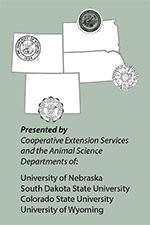Drought Affords New Perspective
The benefit of drought may be found in forced better management.
CHEYENNE, Wyo. (Nov. 28, 2017) — Every cattle producer looks at use of resources and application of management practices through a different lens, and each producer’s lens is filtered by experience. With that in mind, USDA Agricultural Research Service Range Scientist Justin Derner said drought may not be all bad.
Speaking during Range Beef Cow Symposium XXV, hosted Nov. 28-30 in Cheyenne, Wyo., Derner suggested experiencing drought can make a range cattle producer take a hard look at his or her operation and think about how they might do things differently — even during years of more “normal” precipitation. Drought may not be all bad if it is a catalyst for changes that are beneficial for the long term.
Derner said drought can be “an expensive education,” but it can teach producers to be proactive by becoming adaptive managers. Many have learned that adopting strategies for dealing with drought lend flexibility to their operations.
He said one way cow-calf producers can achieve operational flexibility is to diversify. Instead of grazing only a breeding herd, a producer could also graze yearlings. He cited an example where a producer devotes two-thirds of the ranch’s forage to a cow herd, but uses the remainder to graze yearlings. When drought limits forage production, some or perhaps all of the yearlings could be sold, saving more forage for cows, whose numbers might be maintained.
As an alternative to owning yearlings, a producer could take in cattle to custom-graze on a portion of the ranch, or buy dry cows to market after adding weight. Whatever the choice, having an enterprise involving a class of cattle that is more liquid allows a producer to partially destock the ranch without sacrificing cows representing years of genetic progress.
“Any of these can lend flexibility that a rancher doesn’t have when the ranch is 100% cow-calf,” said Derner. “The flexibility can potentially increase net income.”
Derner also recommended ranchers mitigate drought risk by applying savvy grazing management, including conservative stocking rates, and by using available drought forecasting tools such as information from the U.S. Drought Monitor.
Editor’s Note: This summary was written under contract or by staff of the Angus Journal®, which retains the copyright. To request to reprint this article, contact Shauna Rose Hermel, editor, at 816-383-5270. PowerPoints are posted with permission of the presenter and may not be reproduced in whole or in part without the express permission of the presenter. Angus Journal claims copyright to this website as presented. We welcome educational venues and cattlemen to link to this site as a service to their audience.
The Angus Journal's coverage of the event is made possible in collaboration with the event committee. For questions about this site, or to notify us of broken links, click here. Look for additional coverage in the Angus Journal, the Angus Beef Bulletin, the Angus Journal Daily, the Angus Beef Bulletin EXTRA and The Angus Report.


